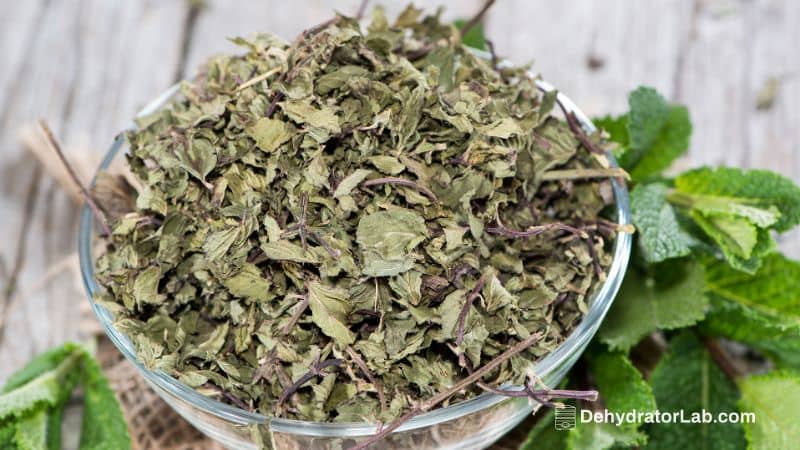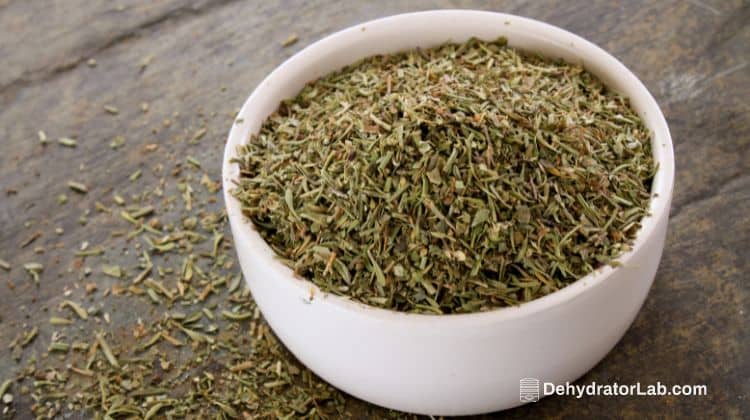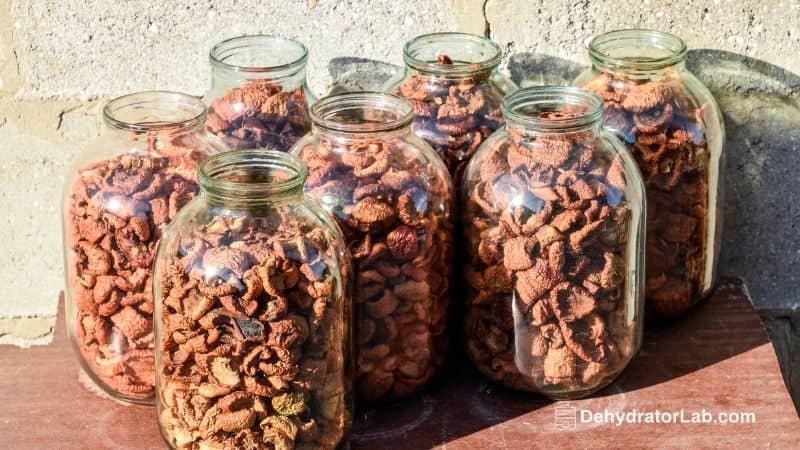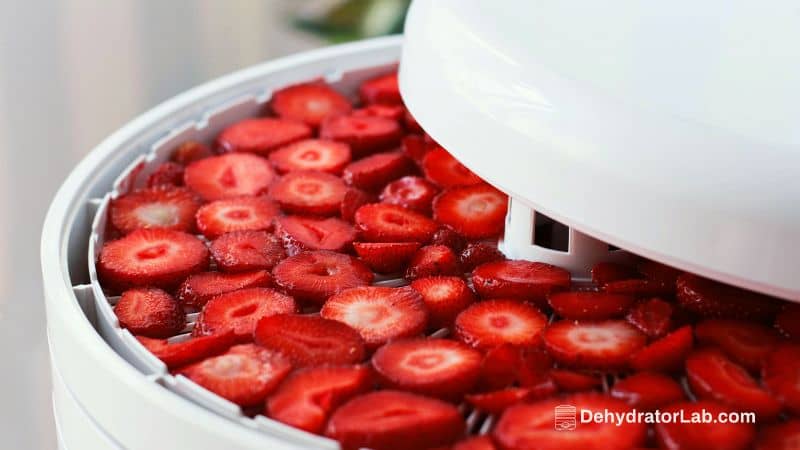Looking for a fresh way to spice up your culinary creations? Dehydrating mint leaves and drying thyme could be the secret ingredients you’ve been missing!
This enticing technique unlocks new dimensions of flavor, transforming your favorite dishes from ordinary to extraordinary.
Dive into our easy-to-follow guide and discover how these two aromatic herbs can elevate your cooking to new heights. Get ready to embark on a flavor-filled journey that will leave your taste buds craving more!

As an Amazon Associate, I earn from qualifying purchases. If you make a purchase after clicking on a link I may earn a small commission at no extra cost to you if items are purchased.
In this article:
A New Twist on Mint
Dehydrating mint might not be the first thing that comes to mind when you think of this versatile herb, but it offers a unique and flavorful addition to various dishes. Dried mint works wonders in teas, casseroles, soups, and stews, particularly those with an Asian influence.
You can also incorporate it into pesto, salads, dressings, or even your homemade herb mixes for a bright and refreshing punch. Imagine adding a touch of dried mint to your classic Herbes de Provence blend for that extra special flavor!
Dehydration Methods: Cosori Dehydrator to the Rescue
While some people prefer to hang their herbs to dry, this method isn’t suitable for everyone. The Cosori dehydrator provides an excellent alternative, especially for those concerned about dust and dander in their homes. See our detailed review on Cosori dehydrator for jerky!
Although the dehydration process may result in a slight loss of color and flavor, the convenience and practicality of using the Cosori dehydrator make it a worthwhile trade-off.
Preparing Your Mint for Dehydration
After washing your mint leaves, use a salad spinner to remove excess moisture. For larger mint leaves, remove them in small clusters before placing them on the dehydrator trays.
This approach helps ensure even drying and prevents the leaves from flying around during the dehydration process. There’s no need to use tray liners, as the leaves will stay put and can be easily collected later.
Drying Thyme: A Tasty Companion
If you’re a fan of multitasking, why not dry some thyme alongside your mint? After rinsing and washing the thyme, arrange the sprigs on a separate dehydrator tray, ideally with a mat to catch any stray leaves.

While it’s not a problem if a few thyme leaves mingle with the mint, it’s preferable to keep the two herbs separate for a more organized result.
Getting Started: Dehydrating Your Herbs
With your trays of mint and thyme prepared, it’s time to start the dehydration process. Set your food dehydrator to air dry, which will provide gentle air circulation without heat. The herbs will dry faster than if they were hung, but the process will still take longer than using heat.
Monitor the progress and make a note of the time it takes for your herbs to reach the desired level of dryness. If you are drying in your dehydrator, use the lowest temperature possible, below 100F/38C.
The Final Reveal: Crisp and Flavorful Herbs
Typically, with dehydrating, these would take anywhere from 4-12 hours to dry, depending on the herb, your dehydrator, and your home humidity. After a few hours, your mint and thyme should be crisp and ready for use.
The mint leaves will crumble easily, while the thyme stems can be effortlessly stripped for storage. With your dried herbs in hand, you’re now ready to elevate your culinary creations with a touch of minty freshness and aromatic thyme!
FAQ’s
Does mint dehydrate well?
Yes, mint dehydrates well and retains much of its flavor and aroma when dried properly.
What can you use dehydrated mint for?
You can use dehydrated mint in teas, casseroles, soups, stews, pesto, salads, dressings, and homemade herb mixes.
How long does it take to dehydrate mint in a dehydrator?
It takes approximately 4-12 hours to dehydrate mint in a dehydrator using the air-dry setting.
What is the best way to preserve mint?
The best way to preserve mint is by dehydrating or freezing, depending on your preference and intended use.
Do you wash mint before dehydrating it?
Yes, you should wash mint thoroughly before dehydrating to remove any dirt or debris.
Is dried mint more potent than fresh?
Dried mint can be more concentrated in flavor, but it may lose some of its freshness and aroma compared to fresh mint.
Should you freeze or dehydrate mint?
Both methods work well, but dehydrating mint is better for long-term storage and incorporating into various dishes, while freezing is ideal for preserving the fresh taste.
What can I do with a lot of fresh mint?
You can use fresh mint in cooking, baking, and beverages, or dehydrate it for later use.
Why do you dehydrate mint?
Dehydrating mint allows you to preserve it for long-term use, making it a convenient addition to various dishes and recipes.
How to dehydrate mint in a dehydrator?
Wash the mint, remove excess moisture, arrange leaves on dehydrator trays, and dehydrate using the air-dry setting for 4-12 hours.
How to dry mint leaves in the oven?
Preheat the oven to its lowest temperature, wash and dry the mint leaves, arrange them on a baking sheet, and dry for 2-4 hours, checking periodically.
How to dry mint leaves in a microwave?
Place clean, dry mint leaves on a microwave-safe plate, cover with a paper towel, and microwave on low power for 30-second intervals until completely dry.
How to air-dry mint leaves?
Tie mint stems together, hang them upside down in a well-ventilated area away from direct sunlight, and allow them to air-dry for 1-2 weeks.
How to dry mint leaves naturally?
To dry mint leaves naturally, tie the stems together and hang them upside down in a well-ventilated area away from direct sunlight for 1-2 weeks.
Conclusion
Dehydrating mint leaves and drying thyme opens up a world of culinary possibilities. With these simple techniques, you can elevate your dishes, impress your guests, and unleash your inner chef.
So, why wait? Start exploring the flavorful potential of dried herbs in your kitchen today!




